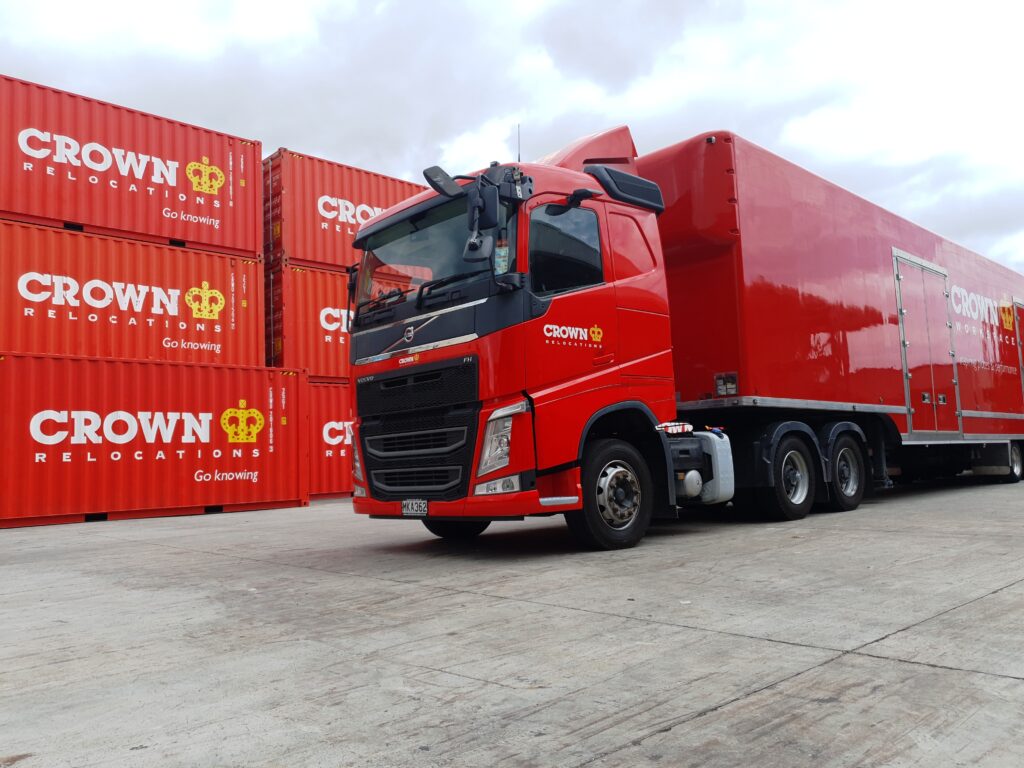When you’re moving overseas, especially from a country as on-the-move as Australia, getting your belongings from A to B can feel like a bit of a mission. With more than a third of Aussies relocating internationally at some stage, picking the right freight option is key. Whether you’re making the big move for work, family, or just chasing a new adventure, deciding between air freight and sea freight can make a real difference to how smooth, affordable, and stress-free your move turns out to be.
Air freight and sea freight are the most common options for getting your belongings from point A to point B. But what sets them apart? How do you decide between speed, cost, and sustainability? Let’s take a closer look at what each freight method offers and identify which one is right for your relocation needs.
Understanding the basics
Before you make a choice, it’s important to understand what air freight and sea freight involve.
What is air freight?
Air freight is the fastest method of transporting goods across international borders. Usually carried out via cargo planes, it’s ideal for time-sensitive shipments or small loads that need to arrive quickly. If you’re moving just the essentials or have valuable items that require less transit time, air freight could be your solution.

Key features of air freight:
- Delivery speed: Typically within 2–10 days.
- Ideal for small shipments: Perfect for crucial or personal effects like documents, clothing, or electronics.
- Flexible and reliable schedules.
What is sea freight?
Sea freight is the economical solution for shipping large volumes of goods. Cargo is moved in shipping containers via cargo ships and is ideal for full-home relocations or heavy items that do not demand urgent delivery. This is especially relevant when relocating entire households.
Key features of sea freight:
- Economical for bulk shipping: The cost per kilogram is much lower, especially for large volumes.
- Slower transit time: Typically ranging 4–10 weeks.
- Better suited for furniture, vehicles, and other heavy or bulky household items.
Having a clear understanding of these options lays the groundwork for making an informed decision.

Key differences between air freight and sea freight
Still unsure? Here’s a quick breakdown of how air freight and sea freight compare across critical factors:
Criteria | Air freight | Sea freight |
Speed | 2–10 days | 4–10 weeks |
Cost | Higher (calculated per kg/vol.) | Lower for larger shipments |
Environmental impact | Higher emissions | Lower emissions |
Volume & weight | Ideal for smaller shipments | Best for full-home relocations |
Reliability | Highly punctual, weather-sensitive | Reliable, but delays at ports are possible |
Customs | Faster clearance, more docs sensitive | Slower clearance, standardised |
Each method has its strengths depending on your needs, urgency, and budget.
Best freight options by popular destinations
Where you’re moving to can also play a big part in how smoothly things go. Certain freight options just work better for some destinations than others. Here’s a look at what tends to suit some of the top spots Aussie expats are heading to:
United Kingdom
For moves to the UK, sea freight is the go-to option for full-home relocations, while air freight works best for sending personal effects that you may need immediately upon arrival.
United States
Given the vast geographical size of the US, combining air freight and sea freight may be the best strategy. Use air freight for personal essentials and sea freight for large bulk shipments that can be sent cross-country.
Singapore & Hong Kong
With their proximity to Australia and rapid custom-clearance processes, air freight reigns supreme for speed. However, sea freight remains a cost-effective option if shipping costs need to be controlled.
New Zealand
Sea freight is the preferred method for volume shipments to our neighbours across the Tasman. However, for faster turnaround or smaller deliveries, air freight has become a popular choice.
United Arab Emirates
The relatively long distance makes sea freight the standard choice for most relocations here. However, air freight is often used for urgent shipments upon relocation.
Knowing the typical preferences for these destinations can help guide your decision.

Choosing your freight option
Every moving situation is as unique as the person relocating. When deciding between air freight and sea freight, here are a few things to keep in mind:
1. Time constraints
Does your timeline allow for 4–10 weeks of delivery time? If not, air freight might be the better option given its speed.
2. Budget
Is cost minimisation your priority, or would you prefer convenience even at a higher price? Air freight costs significantly more per kilogram, whereas sea freight provides better value for large shipments.
3. Volume of goods
Are you moving just a few suitcases or an entire household? Air freight caters best to limited volumes, while sea freight excels with bulky items.
4. Flexibility & risk tolerance
Do you prefer punctual delivery schedules, or are you fine with minor delays? Can you tolerate risks such as rough seas in shipping or weather disruptions during flights? What matters most to you across these four areas will likely steer you toward the freight option that fits best.
Why Crown Relocations?
When it comes to international removals, partnering with an experienced and reliable relocation service makes all the difference. That’s where Crown Relocations stands out.
Here’s how Crown goes the extra mile for you:
- Expert guidance: Not sure what’s right for you? Our experts help assess your needs, timeline, and budget.
- Packing services: We pack, protect, and prepare your belongings for international travel, no matter the method.
- Warranty options: Peace of mind comes standard with comprehensive protection for your goods.
- Tracking and customs support: From door-to-door, we provide transparency and keep your relocation on track with efficient customs support.
No matter your destination or volume of goods, Crown Relocations ensures a seamless transition.
Tips for a smooth international move
Plan ahead. Early preparation helps you secure better rates and avoid last-minute stress.
Prioritise items. Create an inventory of what’s essential, irreplaceable, or non-urgent.
Consider combining methods. For example, ship essentials via air freight and the rest by sea.
Partner with professionals. Experts like Crown Relocations have decades of experience orchestrating smooth moves.
With the proper planning and support, you can enjoy peace of mind during your relocation.
Freight that fits your move
Choosing the right freight option can make your international move quicker, easier, and a whole lot less stressful. Whether you’re after the speed of air freight or the budget-friendly benefits of sea freight, it’s all about finding what suits you best.
Still not sure which way to go? Get in touch with us for expert advice that’s tailored to your move, because nothing matters more than to us than your move.













